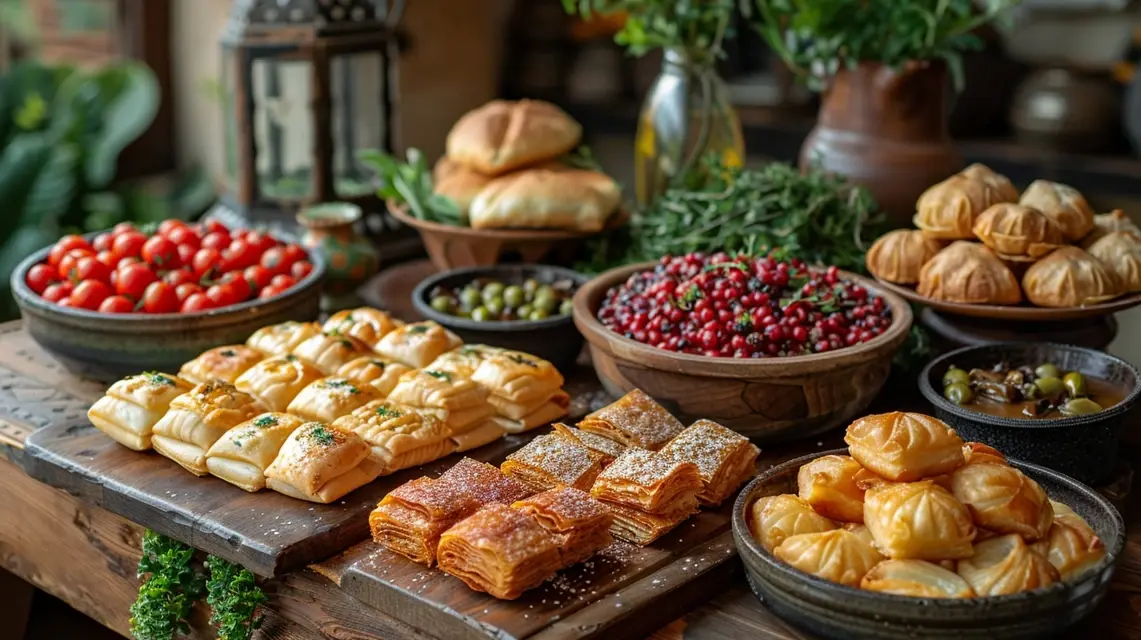Regional Variations of Kataifi Traditions
Across the Mediterranean and Middle East, kataifi has become a dessert that transcends borders. While its delicate shredded pastry and syrupy finish remain constant, each region has developed unique traditions around how kataifi is prepared, flavored, and shared. Exploring these regional variations reveals the dessert’s adaptability and its role as a cultural bridge.
Kataifi in Greece
In Greece, kataifi is most commonly filled with walnuts or almonds and flavored with cinnamon before being drenched in honey or sugar syrup. It is often reserved for holidays and special occasions, making it a centerpiece of festive gatherings. The Greek version highlights simplicity and balance, ensuring the nuts, syrup, and pastry harmonize perfectly.
Regional Greek Touches
Even within Greece, there are local differences:
- Crete: Kataifi enriched with local thyme honey for a floral sweetness.
- Northern Greece: Versions featuring cloves and extra spices for depth of flavor.
- Athens: Often presented in small, elegant portions suitable for urban celebrations.
Kataifi in Turkey
In Turkey, kataifi is closely linked to “künefe,” a dessert where kataifi pastry is layered with soft white cheese, baked until golden, and soaked in syrup. This savory-sweet combination makes it distinct from other regional interpretations and showcases Turkey’s unique culinary approach.
Kataifi in Lebanon and the Levant
Lebanon and surrounding regions are known for their love of floral flavors. Here, kataifi is often scented with rose water or orange blossom water, and pistachios are the nut of choice. Served during Ramadan and Eid, it embodies generosity and festivity.
Kataifi in Egypt
In Egypt, kataifi is frequently used in puddings and layered desserts, often combined with cream or custard. This softer interpretation reflects Egyptian culinary traditions that emphasize richness and comfort.
Kataifi in Modern Adaptations
While traditional recipes remain beloved, modern chefs across the Mediterranean and beyond have adapted kataifi to contemporary tastes. Some create bite-sized versions with chocolate, fruit, or caramel fillings, while others use kataifi as a crunchy garnish for ice cream and puddings. These innovations highlight the dessert’s versatility and enduring appeal.
Conclusion: A Dessert with Many Identities
Kataifi’s journey across regions reveals its remarkable adaptability. From Greek holiday tables to Turkish künefe, Lebanese floral flavors, and Egyptian puddings, kataifi continues to reflect the unique culinary identity of each culture. Yet, no matter the variation, it remains a dessert rooted in tradition and togetherness.
Related reading: Learn more about cultural dessert variations in our Kataifi Dessert Traditions collection.




